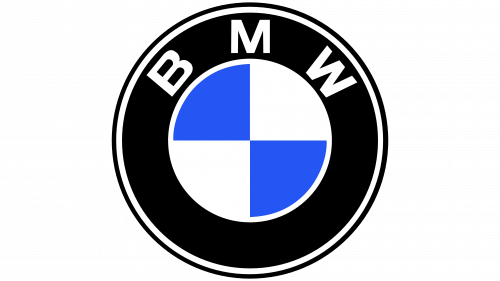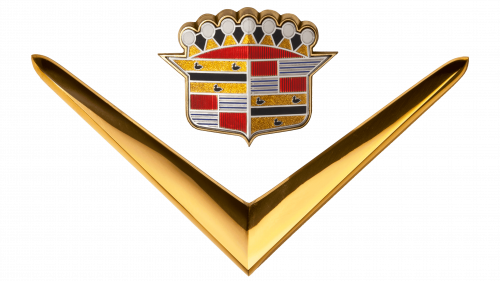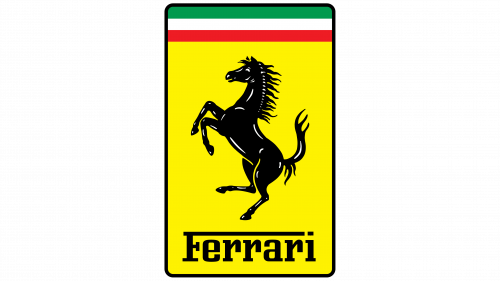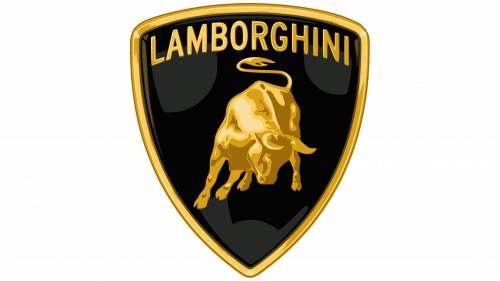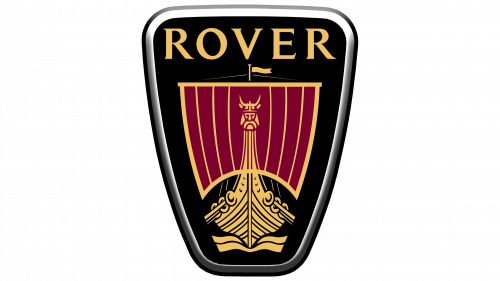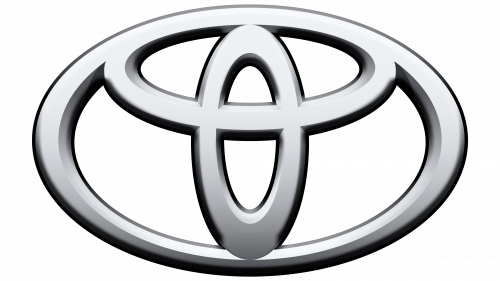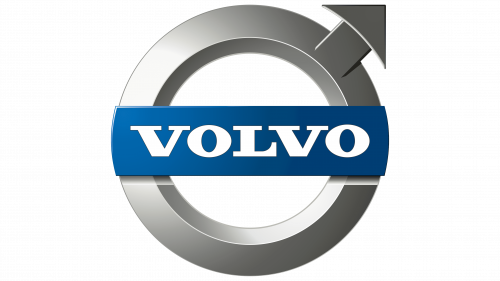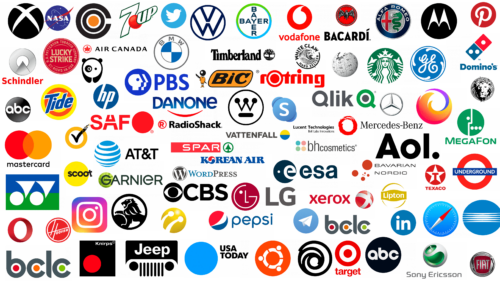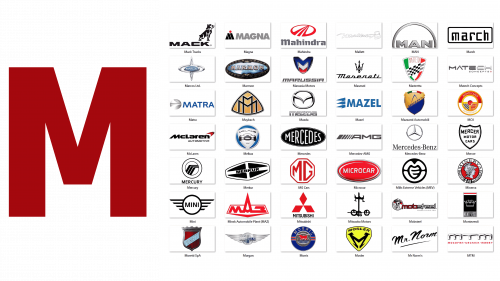Automotive emblems are more than just decorative elements; they are a powerful testament to a brand’s heritage and identity. These emblems can significantly influence a consumer’s perception and decision-making when choosing a new vehicle. For example, well-known automakers such as BMW and Mercedes have built such a strong reputation for themselves that their very name can increase the market value of a vehicle. A clear example of this influence is Aston Martin’s reimagining of the Toyota iQ model. Under the name Aston Martin Cygnet, complete with its emblem, the car cost more than twice as much as the original Toyota.
Studying the origins and origins of these emblems provides a better understanding of the history and strategies of the automobile industry. In this paper, we will examine ten emblematic logos of the automobile industry. Through this study, we want to show how these symbols reflect brand ethics and contribute significantly to the market appeal of an automobile.
Abarth
The Abarth emblem stands out with a striking combination of colors and serves not just as an identifier but as a visual anchor that makes anyone who sees it stop and take notice. The centerpiece of the emblem is the image of a scorpion, a creature known for its strength and agility. But for Abarth, it is not just a scorpion. It is linked to the zodiac sign of the company’s founder, Carlo Abarth. By integrating this astrological emblem, the brand hints at the birth and evolution of Carlo’s automotive vision. Surrounding the scorpion is a protective shield, indicative of the durability and reliability for which Abarth cars are renowned. The combination of the scorpion and the shield is not just symbolic. It reflects the brand’s rich history in racing, where maneuverability and durability are paramount. With this logo, Abarth is not just showcasing its brand but telling a story of passion, heritage, and an unwavering commitment to automotive excellence.
BMW
The BMW emblem is a beacon of refinement and dynamism, signifying the brand’s commitment to producing cars that emphasize performance and exude an aura of refinement. Thanks to these qualities, BMW cars are chosen by many professionals and enthusiasts around the world.
The iconic BMW logo offers a glimpse into its rich history and heritage. The black outer circle, reminiscent of the original Rapp Motorenwerke emblem, pays homage to BMW’s beginnings as an aircraft engine manufacturer and hints at the brand’s long-standing commitment to engineering excellence.
The central part of the emblem – alternating blocks of blue and white colors – has caused a lot of controversy and speculation. According to a popular theory, these patterns reflect the rotation of an airplane propeller against a clear sky, which is directly related to the aviation roots of the brand. Although some historians dispute this theory, the emblem’s connection to aviation remains an intriguing aspect of the brand’s history.
The color scheme of the emblem unmistakably echoes the hues of the Bavarian flag. This not-so-subtle hint shows that BMW is proud of its origins and continues to epitomize the industrial spirit of Bavaria.
This rich historical context embedded in the emblem demonstrates how the fusion of heritage and modernity has allowed BMW to take its rightful place in the automotive industry. Every time a BMW vehicle passes by, it carries a piece of history, craftsmanship, and innovative heritage – all encapsulated in this iconic emblem.
Cadillac
Cadillac Automobile Company began with a clear vision: to create reliable and affordable vehicles that could replace traditional horse-drawn carriages. Such an ambition was to revolutionize transportation by offering ordinary people previously unattainable luxury and efficiency. To embody this pioneering spirit and the brand’s quest for elegance, the company sought inspiration from a logo of historical significance.
Turning to the annals of history, the company looked to Antoine Lomé de la Mota, Señor de Cadillac. This adventurous French explorer laid the foundation stone for the bustling city of Detroit in 1701 and left behind a legacy symbolized by his family’s coat of arms. This emblem, deeply intertwined with stories of exploration, leadership, and ambition, seemed a fitting symbol for an automotive brand ready to break new territory in the world of transportation.
The crest from Cadillac’s family lineage has been gracefully adapted into an automobile brand emblem. Over the decades, the design, technology, and functionality of cars have changed, and so has the Cadillac emblem. Each version reflects the brand’s ongoing journey, combining past heritage with modern aesthetics.
Most recently, the emblem has undergone another, perhaps its most significant, transformation. The current look of the emblem is more than just a visual change; it’s a testament to Cadillac’s continued commitment to innovation and a tribute to its storied past.
Ferrari
The Ferrari emblematic “horse” is the epitome of energy and dynamism, reflecting the essence of automotive excellence. Historically, this symbol traces its lineage back to World War I, when it adorned the fuselage of a fighter plane. Enzo Ferrari, the creator of the brand, later met the family of a pilot who inspired him to adopt this emblem. They believed that this symbol could be a harbinger of his success and good fortune.
Since then, this emblem has become synonymous with the Ferrari brand. For decades, it has adorned the hoods of high-performance cars and found its way onto a wide range of products. Such products, imbued with the spirit of the “galloping horse,” contributed greatly to the commercial success of the brand.
Lamborghini
Lamborghini, known for its bold and powerful designs, creates cars that embody unbridled energy. This essence is eloquently reflected in the brand’s emblem with the image of a strong bull, reflecting the indomitable spirit of the brand. The story of the creation of this emblem goes back to Ferruccio Lamborghini’s visit to Spain, where he was shocked by the splendor of the famous fighting bulls and saw in them a symbolic embodiment of the philosophy of his brand.
While the historical rivalry between Lamborghini and Ferrari is no secret, some speculate that Lamborghini’s decision to choose the bull may have been influenced in part by Ferrari’s emblem, the horse. There is a cosmic connection in the choice of the bull, as it corresponds to the zodiac sign of Taurus, under which Ferruccio Lamborghini was born.
The Lamborghini emblem is not just a brand identifier but a promise and an expectation. The bull that adorns the front of each car symbolizes the pulsating heart of the machine, full of energy ready for action, reflecting the brand’s commitment to unmatched performance and unrivaled spirit.
Mercedes-Benz
The Mercedes emblem, the epitome of elegance and minimalism, exudes a sense of trust and authority that is in keeping with the brand’s heritage. The three-pointed star, which goes deep into automotive history, was introduced in 1872. As the story goes, Gottlieb Daimler, an influential figure in the development of the automotive industry, drew the star over his residence, depicted on a postcard from Cologne.
This was not just an artistic intention but a personal promise. Daimler envisioned this star as a beacon of success, representing his aspirations in his endeavors. In keeping with his vision, this star, with its radiant rays, took its place on vehicles bearing the Mercedes name. The star became not just a decorative element but synonymous with the brand’s commitment to excellence. Today, the Mercedes badge is universally recognized for its simple yet profound design.
Rover
The Viking ship silhouette is a testament to the brand’s commitment to strength, exploration, and innovation. Drawing on the rich history of the Vikings, known for their daring voyages and unrivaled energy, Rover has positioned itself as a pioneer, constantly pushing the boundaries. The Vikings, often described as history’s greatest explorers, symbolize the relentless pursuit of the unknown, which is what Rover seeks to embody.
Using a distinctive historical motif such as the Viking ship allows the Rover brand to remain distinctive and easily recognizable in a crowded marketplace.
Subaru
The emblem of Subaru, an iconic brand in the automotive industry, embodies the idea of unity and cooperation. Its history dates back to 1953 when the collective efforts of five different Japanese companies led to the creation of Fuji Heavy Industries (FHI). From this powerful alliance, the Subaru division of the automobile manufacturing business emerged.
Drawing inspiration from its name – Subaru, which means “to unite” – the brand also refers to celestial themes. In particular, the constellation of Taurus with six stars – the Pleiades. This star cluster symbolizes the merger of five companies and echoes the famous Greek myth in which Zeus transformed the daughters of Atlas into a constellation.
In addition to the symbolism of the logo, Subaru’s successes on the racetrack, especially in rally racing, have cemented the image of high-performance cars in the minds of enthusiasts. The influence and recognition of the Subaru emblem is so great that in 2003, FHI decided to make the Subaru logo its global corporate symbol, emphasizing the brand’s key role in the conglomerate.
Toyota
The Toyota emblem epitomizes the combination of sophistication and functionality, resonating deeply with customers around the world. Known for its minimalist and reliable vehicles, Toyota has cemented its reputation as the world’s leading automaker. This thoughtful design philosophy aims to strike a balance between aesthetic appeal and functional pragmatism – principles that have led the company to success.
The emblem, characterized by understated elegance, reflects this principle. The design of the emblem subtly captures the essence of sophistication intertwined with simplicity – the hallmarks that define the Toyota way. The emblem has become a symbol recognized worldwide as a testament to the brand’s consistency in creating high-value vehicles.
Volvo
Meticulously designed by renowned Swedish calligrapher and maestro of typography Karl-Erik Forsberg in the 1950s, the Volvo emblem represents durability and vigor. The symbol of iron, an element known for its strength and durability, is intertwined in this emblem in an original way. The emblem subtly hints at the masculine gender symbol, adding another layer of durability to its interpretation.
This design choice is far from accidental. Reflecting Volvo’s brand image, the brand’s cars carry a sense of ruggedness and reliability. These cars symbolize endurance, which is reflected in their logo. Over the years, this symbol has become a symbol of brand identity and a testament to the company’s commitment to producing vehicles that guarantee durability and efficiency.
Conclusion
The significance of an automobile company logo goes beyond mere aesthetics. These ten examples emphasize the deep connection between the emblem that adorns a car and the overall ethos of the brand. Logos are more than just symbols; they embody the performance, reliability, and engineering prowess of the vehicles they represent. Automakers invest heavily in branding. It’s not just about creating a recognizable image but embodying the essence of their vehicles and the promises they make to their customers.
Through emblems, car companies communicate their heritage, values, and vision for the future. A carefully designed logo can evoke emotions, aspirations, and trust. It can be a deciding factor for potential customers, giving them an idea of what they can expect from the brand.

